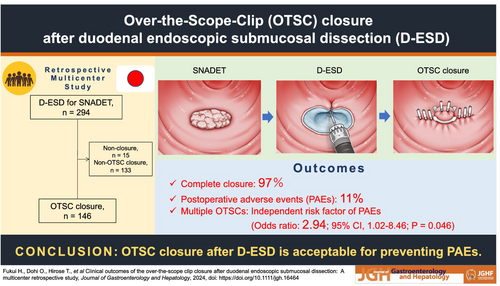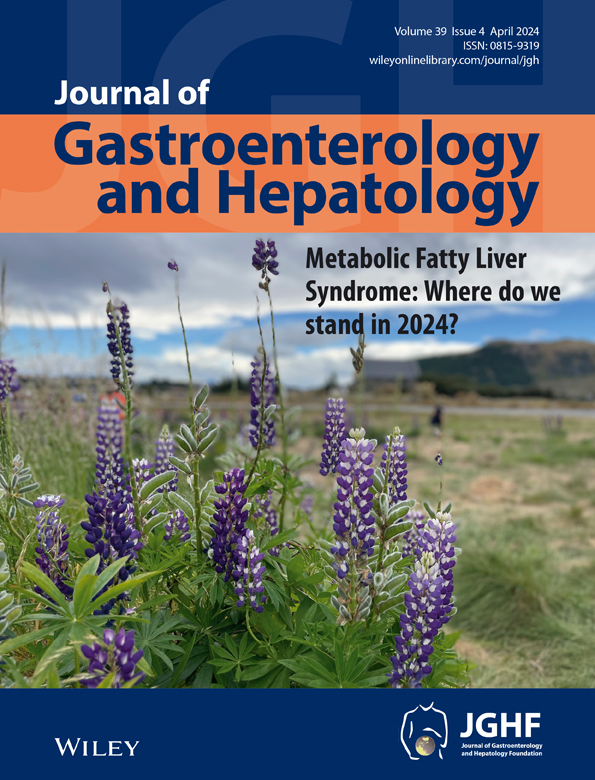Clinical outcomes of the over-the-scope clip closure after duodenal endoscopic submucosal dissection: A multicenter retrospective study
Declaration of conflict of interest: Osamu Dohi received research funding from Fujifilm Co. Ltd, and Yoshito Ito received research funding from Fujifilm Co. Ltd, MC Medical, Inc, and Olympus Corporation. The other authors have no conflicts of interest to declare. The Century Medical Co. had no role in the design, conduct, data collection, data interpretation, or reporting of this study.
Abstract
Background and Aim
Prophylactic closure with the over-the-scope clip (OTSC) after endoscopic submucosal dissection (ESD) of superficial non-ampullary duodenal epithelial tumors (SNADETs) has been reported to reduce postoperative adverse events (AEs). However, there are few evidences regarding AEs-associated factors and long-term outcomes of OTSCs.
Methods
From January 2011 to December 2020, 139 consecutive patients with SNADETs who underwent ESD followed by OTSC closure in five institutions were extracted in this retrospective study. The primary endpoint was the rate of postoperative AEs after prophylactic OTSC closure. The secondary endpoints were the complete closure rate, residual rate, and long-term AEs associated with residual OTSCs.
Results
The rate of complete closure of the mucosal defect was 97.3% (142) in 146 SNADETs, which were completely resected by ESD. Postoperative AEs, including delayed bleeding, delayed perforation, and localized peritonitis, occurred in 6.2%, 3.4%, and 2.1% of patients, respectively; however, all of the cases improved without surgical treatment. In the multivariate logistic regression analysis, the use of two or more OTSCs was a significant independent risk factor for postoperative AEs (odds ratio, 2.94; 95% confidence interval, 1.02–8.46; P = 0.046). The residual OTSC rate was 46.4% at 1 year postoperatively, and long-term AEs included duodenal erosions and ulcers associated with residual OTSCs.
Conclusions
Prophylactic closure with OTSCs after duodenal ESD can provide acceptable short-and long-term outcomes for preventing postoperative AEs. However, multiple OTSCs were the independent risk factors of postoperative AEs due to the gaps between and near the OTSCs.





